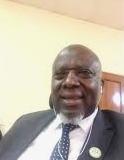Survey on Quality of School Sites and Locations of Lagos State Public Schools
DOI:
https://doi.org/10.53449/ije.v2i2.89Keywords:
adequacy of school plants, locations, environment, school accessibility, UNESCO prescriptions on school spacesAbstract
In this study, a survey on quality of school sites and locations of Lagos State public schools was carried out with specific focus on the level of availability of the facilities with reference to UNESCO prescriptions for school facilities supplemented with Commonwealth Department of Education. Two research questions were raised for the study. Forty-six (46) Schools were randomly sampled from 2 purposively selected educational districts of Lagos State. The study adopted a descriptive survey design because it was concerned with what was on ground and how they conformed to the standards expected of the facilities. The instrument used to collect data and establish the standard and quality of available of school sites/ locations in the sampled schools was Checklist of the Existing School Location and Site (CESLS), whose reliability was found to be 0.83. The data collected were analysed using simple percentages. The findings showed that 97.8% of Public Junior Secondary Schools in Lagos State were located at accessible areas. Between 73.9% and 89.1% of the school plants were averagely good in quality. However, about 37% - 41% of the schools sampled had poor topography, epileptic power supply and irregular water supply. Few of the schools were located far from noisy areas and external distraction. This falls short of UNESCO’s standard of 183 metres distance away from sources of noise. Between 32% and 52% of the schools were located close to sources of noise such as hotels, market areas and highways.
Downloads
References
Aniah, E. J. Akaba, L. A, Obong, L. B., & Okey, S. M. (2010). Strategies for School environmental management in Nigerian secondary schools: A case of Calabar. Internal Education Studies, 3(1), 196-205.
Asiabaka, I. P. (2008). The need for effective facility management in schools in Nigeria. New York Science Journal, http://www.sciencepub.org,ISSN1554-0200
Atueyi, U. (2017). ‘Nigeria should strive for a minimum of 30 per cent budget on education’. Guardian Newspapers Ventra.
Badejo. A., & Olaniyonu. S. O. A (2004). Environmental influences on examination malpractices. Journal of Research in Educational Management, 1(1), 1-10.
Brown, K. (2007). Using equity audits to identify schools’ excellence and equity. Journal of Contemporary Education, 4(1), 21-35.
Coalson, J., Durdley, C., & Hurley, J. (2011). School facilities and student achievement. Centre for school innovative school facilities. www.cisforegon.org
COMPASS (Community Participation for Action in Social Sector). (2009). Report on implementation of basic education in child survival and reproductive health interventions in 14 Local Government Areas in Lagos State.
Commonwealth Department of Education. (2013). Typical space and dimensions for open plan schools of guidelines for Virginia State in America.
Gislason, N. (2009). Mapping school design: A qualitative study of the relations among facilities design curriculum delivery and school climate. The Journal of Environmental Education Birmingham Heldref publication
Hunter, M. A. (2006). Public school facilities: Providing environments that sustain learning. Teachers College Columbia University. New York, NY: National Access Network.
Ibe-Bassey, G. (2009). Educational technology and challenges of attaining educational goals in Nigeria. Journal of Educational Technology and Instruction, 1(1), 1-11.
Kayode, J., & Adeniran, R. (2012). Nigerian newspaper coverage of the millennium development goals. The role of the media. Itupale Online Journal of African Studies, 4, 1-17.
Kolawole, C. O., & Arikpo, A. P. (2001). Status and facilities in public primary schools: Implementations for curriculum implementation. Ibadan Journal of Educational Studies, 251-260.
Kuuskorpi, M., Kaarina, F., & González, N. C. (2011). The future of the physical learning environment: School facilities that support the user. CELE Exchange .www.oecd.org/publishing/corrigenda pp. 1-8.
Madumere, S. C. (2007). School plant planning facilities management and education law. Lagos: Okoye Honeybees Enterprises.
Nwaboku, N. C. (2006). Teacher, the answer is blowing in the wind. 20th Inaugural Lecture. Lagos: Lagos State University Press.
Oladunjoye, O. (2015). Address delivered by the honourable commissioner for education, at the 2015 annual ministerial press briefing to mark the fourth-year anniversary of the second term in office of the governor of Lagos state, Mr Babatunde Raji Fashola.
Olaniyonu, S. O. A. (2007). Education for planning: Glorious ideals and harsh realities. 29th Inaugural Lectures, Lagos. Lagos State university.
Oyesola, G. O. (2007). Planning education building and facilities. Alphabetic list of journal articles Ilorin. Retrieved from: http:www.ijeunilorin.net
Schneider, M. (2002). Do school facilities affect academic outcomes? National Clearinghouse for Educational Facilities. Retrieved from: http://www.edfacilities.org/pubs/outcomes.pdf
Twigg, J. (2007). Characteristics of a disaster-resilient community: A guidance note for the Department for International Development. lib.riskreductionafrica.org/bitstream/handle/.../623/characteristics%20of%20a.pdf
UNESCO (1985). Standards of educational facilities, training materials in educational planning administration and facilities. Division of Educational Policy and Planning UNESCO, EPP, TMM, Parish, Original English UNESCO, Module II. Section I, pp. 11-25.
Walden, R. (2015). Criteria for the judgment of the quality of school buildings. In R. Walden (Ed..), Schools of the future (pp. 201-222). DOI 10.1007/978-3-658-09405-8_9
World Bank. (2012). Education project credited with surge in academic improvement. Retrieved from:








